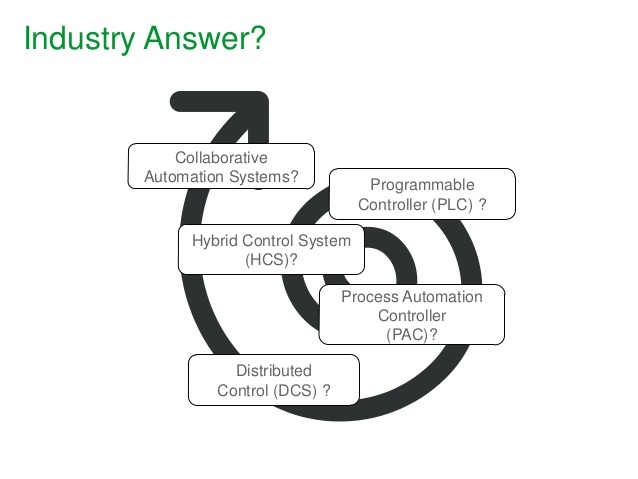Contact us at +32 (0) 47 572 56 84 or
info@reditechautomation.com
Hybrid Control systems

Traditionally, DCSs have been used primarily in process industries such as oil and gas production and transport, refining, chemical processes, food and beverage, power generation,... PLCs have been used in discrete industries such as automotive, electronic assembly, bottling facilities, machine parts manufacturing, conveyor belt sorting and material movement,...
However, batch industries such as food and beverage, pharmaceuticals and bottling have used both DCS and SCADA/PLC. Some of these industries, such as food and bottling overlap because they include both process and discrete operations.
The PLC and the DCS each have their ‘sweet spots’ where they are optimized to deliver the best possible results. And many companies make full advantage of their capabilities, combining both systems to cover all the upstream and downstream bases in their production process. Some end users have an entire system of ‘integrated’ elements, sometimes forced to work together, with varying results.
What they could do is run a single, hybrid control strategy that combines the benefits of both DCS and PLC/HMI, enabling them to run completely different processes from the same controller environment.
Advances in technology have allowed companies in the process industries to combine the advantages of DCS and SCADA/PLC without the history limitations tied to each of those options. They can have the global data access, function blocks and inherent redundancy of a DCS system with the speed, scalability and openness of a SCADA/PLC solution, all at a competitive price.
Today’s hybrid systems offer a viable alternative for
DCS’s, although the final decision will often depend on more than mere
technical parameters...
Did we catch your attention? Do you want to know more about
hybrid systems?
Recent articles
- Get a taste of Smart Manufacturing! by Thijs Van Hoorick posted at 21/12
- Smart Terminal - by Reditech & iOnLogistics by Thijs Van Hoorick posted at 14/10
- Industry 4.0 at WOTS by Thijs Van Hoorick posted at 23/09

